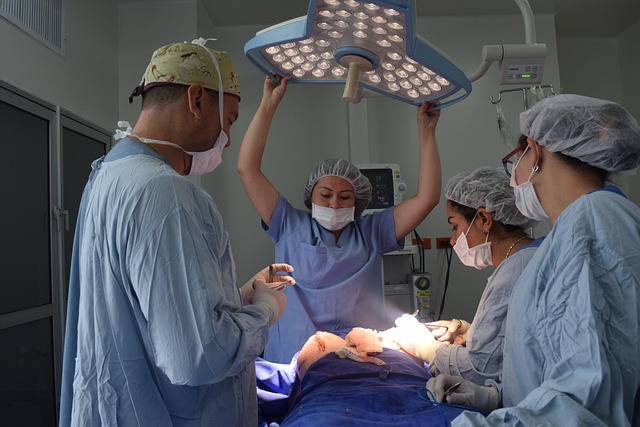Tummy Tuck Explained: Procedure, Recovery & Costs
Discover what a tummy tuck (abdominoplasty) involves, from surgical steps and recovery timelines to potential risks and expected expenses. This practical guide helps you weigh benefits, prepare questions for surgeons, and understand costs and recovery so you can decide if a tummy tuck is right for you.

A tummy tuck, medically known as abdominoplasty, is a surgical option for people looking to remove excess abdominal skin and fat while tightening weakened underlying muscles. Often sought after pregnancy or major weight loss, the procedure can produce a flatter, firmer midsection. This guide explains how the surgery is performed, what complications to watch for, what recovery looks like, how to choose a qualified surgeon, and typical cost ranges to help you make an informed decision.
How the tummy tuck procedure works
During an abdominoplasty, the surgeon generally makes a horizontal incision across the lower abdomen, positioned so it can be concealed by underwear or swimwear. Through this incision the surgeon can access abdominal tissues, repair and tighten the separated or stretched abdominal muscles with sutures, and excise surplus skin and fat. The remaining skin is then pulled downward and sutured into place to create a smoother contour. In many cases the surgeon repositions the navel so it looks natural after the skin is tightened.
There are variations of the operation depending on patient needs. A full tummy tuck addresses both above- and below-navel areas and often involves muscle repair. A mini tummy tuck is limited to the lower abdomen and is less invasive. Some patients combine liposuction with abdominoplasty to refine contour. Your surgeon will recommend the technique that best matches your anatomy and cosmetic goals.
Potential risks and complications to consider
As with any major surgery, abdominoplasty carries risks. Common complications include infection, bleeding, poor wound healing, and visible scarring. Patients may experience numbness or altered sensation in the treated area; this is usually temporary but can be prolonged in some cases. Other possible issues are fluid collection under the skin (seroma), blood clots, and adverse reactions to anesthesia.
Careful preoperative assessment and adherence to your surgeon’s instructions—such as stopping certain medications, quitting smoking, and following fasting guidelines—reduce risks. Discuss your medical history, allergies, and expectations with your surgeon so they can tailor a plan and explain how complications would be managed.
What to expect during recovery
Recovery timelines vary, but most patients face several weeks of healing. Expect pain, swelling, and bruising for the first days to weeks; your doctor will prescribe pain control and give guidance on drains if they were placed to prevent fluid buildup. You will be advised to rest and walk gently soon after surgery to encourage circulation, but strenuous activity and heavy lifting should be avoided for at least 4 to 6 weeks or longer depending on your surgeon’s advice.
Incisions need daily care and protection from sun exposure while they mature. Many people return to light office work within two to three weeks, but full return to vigorous exercise can take six weeks or more. Final contour improvements continue as swelling resolves over several months, so the ultimate outcome may not be fully apparent until three to six months after surgery.
Choosing the right surgeon
Selecting a qualified, experienced surgeon is one of the most important decisions. Look for a board-certified plastic surgeon with a strong track record in abdominoplasty. Review before-and-after photos, ask about complication rates, and request references or patient testimonials when available. During consultations, discuss your goals, probe their approach to muscle repair and scar placement, and clarify what is included in fees and postoperative care.
Comfort and trust are essential; you should feel heard and confident in the surgeon’s plan. Also check the facility accreditation and the availability of anesthesia professionals and follow-up support.
Typical costs and what they cover
Costs vary widely by provider, geographic location, and the complexity of the operation. Listed below are estimated ranges from various sources to give a general idea of potential expenses.
| Provider | Estimated Cost Range | What’s Included |
|---|---|---|
| American Society of Plastic Surgeons | $6,000 - $12,000 | Surgeon’s fee only |
| RealSelf (average) | $8,275 - $12,900 | Average total cost reported |
| CareCredit listings | $3,000 - $15,000 | Varies; may include total procedure cost |
| Mayo Clinic estimates | $5,000 - $20,000 | Depends on case complexity |
Prices, rates, or cost estimates mentioned above are based on available information and may change over time. Independent research is advised before making financial decisions.
Keep in mind many estimates exclude fees for anesthesia, operating room facilities, and postoperative garments or medications. Financing plans are commonly offered by clinics to spread payments; always request a detailed written estimate during consultation.
Making the final decision
A tummy tuck can offer dramatic improvements in abdominal contour and confidence for the right candidate, particularly when excess skin and weakened abdominal muscles are present. However, it is a major procedure with recovery time and potential complications. Take time to research, prepare questions for multiple surgeons, and weigh the financial and physical commitments.
This article is for informational purposes only and should not be considered medical advice. Please consult a qualified healthcare professional for personalized guidance and treatment.






